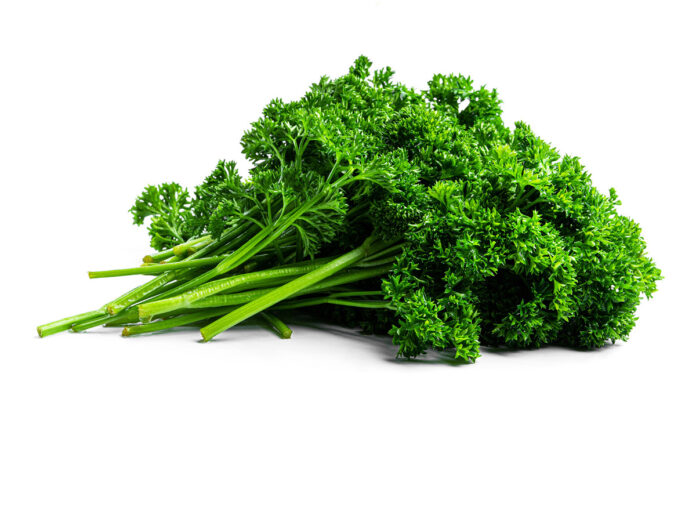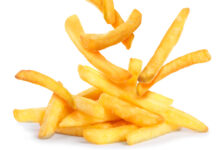
Let’s talk plants. There’s a lot of scientific truth to the statement “You are what you eat.” Your body is built of the nutrients—the amino acids, glucose, fats, vitamins, and minerals—that your gut digests and absorbs from food.
Eat more plants isn’t just a tagline for me, it’s how I live. In my opinion, a plant-based, anti-inflammatory diet is the ultimate foundation for better digestive health and optimal well-being.
Let’s start with the most science-y reason to go plant-based: good bugs like plants. You see, the kind of bacteria you want in your gut need fermentable fibres and carbohydrates that you will find only in plant foods. These are the good bacteria that fight off the gut-wrecking bugs, create plenty of short-chain fatty acids to feed gut cells, calm inflammation, and support the integrity of your gut barrier.
Bacteria are kind of amazing, and they are starting to get the credit they deserve.
In the research, we see a lot of evidence that plant-based diets boost the microbiome. For example, people who follow vegetarian or vegan diets tend to have a more anti-inflammatory ratio of Bacteroidetes to Firmicutes bacteria. Vegans tend to have increased levels of Faecalibacterium prausnitzii, a species of bacteria with anti-inflammatory and gut-protecting effects.
An anti-inflammatory diet is really about eating as many whole plant foods as possible. I’m talking fruit, vegetables, grains, legumes, nuts, and seeds. It’s that simple. We are part of the natural world and have survived this long by eating what we find in nature. So, when we ditch the fad diets and drop hyper-processed foods, we don’t need to worry as much about the minutiae of nutrition.
When you eat mostly whole plant foods, you are automatically eating in a way that:
- improves blood sugar balance by reducing high-glycemic and pro-inflammatory processed foods like white flour and added sugars
- improves the quality of fats consumed: less saturated fats and more unsaturated fats
- increases your intake of antioxidant and anti-inflammatory compounds
- provides ample fibre and fermentable carbohydrates to encourage regular elimination and feeds your gut microbes
Eat more plants is easy to say, but our collective habit of eating out of boxes and bags is so deep that sometimes our brains have a hard time processing the change. We associate snacks with packaged snack foods so intensely that simply grabbing some almonds or a peach seems odd. Or we’ll scour the ingredients lists of every granola bar and cracker on the shelf looking for the healthiest one instead of buying some hummus and carrots.
More often than not, eating a plant-based diet is about shifting mindsets and habits instead of eating in a drastically different way. Change can feel overwhelming, but it doesn’t have to be when you realize that it doesn’t need to happen overnight. Just keep tweaking your habits until all of a sudden you realize that you are rocking plant life. Here are some simple ways to shift to eating more plants:
- Buy enough fruit and vegetables at the grocery store (we’re talking pounds of them) to get more onto your plate. If all you buy is a couple of bananas, a few apples, and a head of broccoli, it won’t get you through a week of plant-full eating.
- Double the fruit and vegetables in your favourite recipes or add beans to them.
- Cook with what’s in your fridge, as opposed to on a whim, to ensure that produce gets eaten, not wasted. Vegetable waste is always a big concern for clients, and it leads them to skimp on buying plants at the store.
- Always order a side of vegetables at a restaurant if your main isn’t plant-y enough.
- Snack on whole foods, not packaged foods.
Remember that all plants are good plants. Choose the foods that fit into your budget. Buy what’s on sale and make a plan to use it up. Don’t underestimate the power of frozen fruit and veggies.
You might be worried that the way you currently eat is wrong or fearful that the only way to be healthy is to go vegan overnight, and that sparks some anxiety for you. But, remember, it’s a marathon, not a sprint.
This is about consistent, gentle, daily effort toward a healthier you. The best place to start is to choose a habit or two to focus on until it becomes automatic. It could be a green smoothie for breakfast or some fruit mid-afternoon instead of a candy bar. The good news is that drinking a glass of wine or eating a piece of cake on Friday night doesn’t magically erase your healthy habits.
The magic is that the more you eat plants, free of any restrictive or good/bad mindsets, the more you’ll begin to crave them naturally, and you just might find that you want a bowl of pasta with a big helping of roasted broccoli or garlic-sautéed white beans on the side. Sometimes, you won’t and that’s fine too. Your relationship with food, just like your relationship with your body, is an important part of this whole wellness equation.
ALL PRODUCE IS GOOD PRODUCE, BUT HERE’S SOME TO TRY:
- All veggies are good, but make sure you always put some brassicas and greens into your cart, like broccoli, parsley, bok choy, kale, and cauliflower.
- Make extra space for anti-inflammatory aromatics such as onions, garlic, ginger, and turmeric.
- When you can, focus on higher-fibre and temperate fruit most often, such as apples, pears, and berries. Bananas, kiwis, and pineapple are excellent for their gut-soothing properties, and peaches and watermelon for their bacteria-boosting FODMAPs.
- Don’t forget about frozen fruit and veggies. They are healthy and budget-friendly.
- Nuts and seeds are packed with fibre, minerals, and healthy fats. Always have two or three types on hand, such as cashews, almonds, pistachios, hemp hearts, and pumpkin seeds. Avoid sweetened trail mixes that are more candy than they are nuts.
- Whole, intact grains are tops for gut health. I find the high-chew grains, such as wheat berries, spelt, and barley, the most satisfying, but they contain gluten so they aren’t for everyone. For gluten-free options, try buckwheat, gluten-free oats, and millet.
- Keep it 100 when it comes to prepared grains, such as 100 per cent sprouted grain breads, 100 per cent whole-grain traditionally fermented sourdough breads, and 100 per cent whole-grain crisp breads; 100 per cent whole-grain pastas
- (cooked al dente) also fit the bill.
- Plant protein is essential for a happy gut. Always have two or three legume options in your kitchen, such as chickpeas, tempeh, and lentils. Canned (no salt added) is convenient. Dried is more economical and typically has a nicer texture.
- Smoked tofu is a great ready-to-eat option, and pre-marinated tempeh saves time in the kitchen while boosting flavour.
- Chickpea flour is a great way to incorporate more protein and fibre into baked goods and is also an alternative for eggs.
You May Also Like Healthy Eating

Read This Story in Our 2023 Inspiration Issue
Read about our 2023 Canada’s Top Fitness Instructors – our top 30 from across Canada! How to Train Smarter in 2023, Yoga Nidra for What Ails You, Racing the World’s Highest Ultramarathon, our favourite plant-based recipes and more!
















